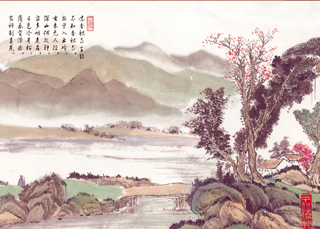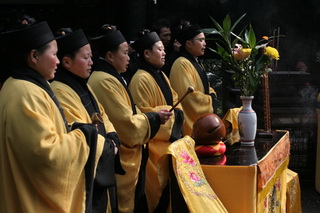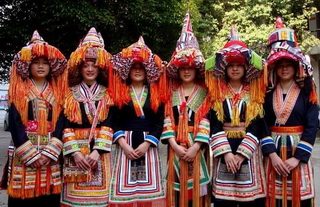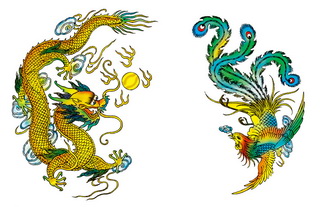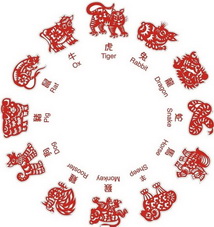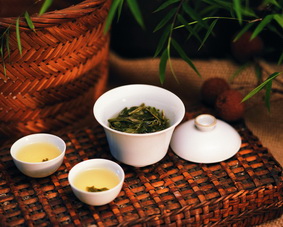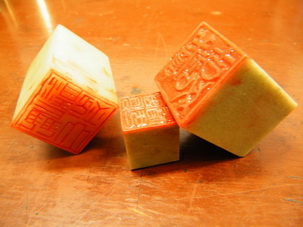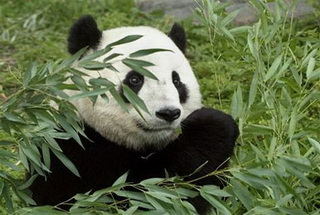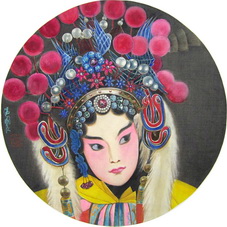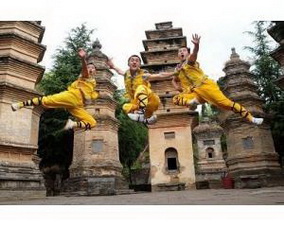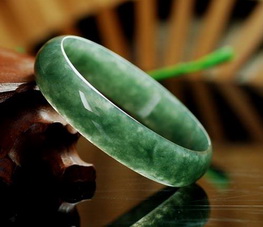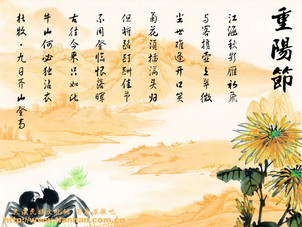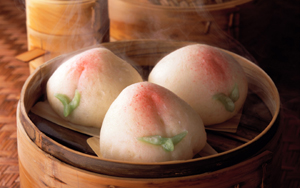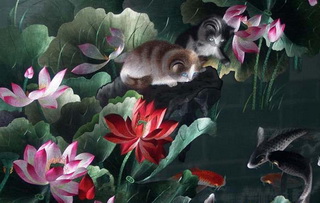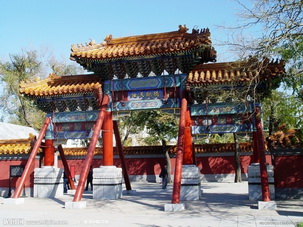
 China Tours
China Tours Tibet Tours
Tibet Tours China Theme Tours
China Theme Tours Off The Beaten Track
Off The Beaten Track Yangtze Cruises
Yangtze Cruises China Trip Planner
China Trip Planner Travel Agents
Travel Agents


We had a wonderful time in Tibet. We have learned a lot about this unique destination because of the wonderful guide Degyi who is so knowledge and always available towards our tours. We stayed at the Shangri-La Hotel Lhasa, and we would never imagine a Tibet travel could be so nice and amazing without the help of Degyi.
Also, thanks a lot to our Tibetan driver Mr.Wongdun for his safe driving and a good sense of service along the way.
We shall return Tibet in the near future!
P.B. and A. A - Europe
Tibet Travel
June 2018 (Private Tibet Journey from Kathmandu)

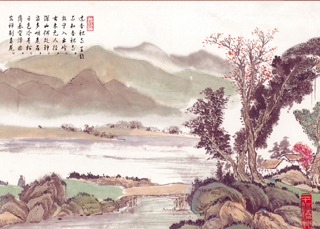
Chinese Culture gives you a panoramic view of China. Here at Splendid China Tours we hope to introduce to you this ancient yet young country: its hospitable people, beautiful landscapes, unique and splendid arts, colorful folk traditions, which will help you understand her yesterday and today from various aspects.
Click to view the details:

Traditional Chinese Painting is highly regarded throughout the world for its theory, expression, and techniques. And it is also one of the oldest continuous artistic traditions in the world. Earliest paintings were ornamental, not representational; they consisted of pattern or designs, not pictures. Traditional Chinese painting is known in Chinese as guo hua, meaning 'national' or 'native painting'.
China is a multi-religious country. Taoism, Buddhism, Islam, Protestantism and Catholicism have all developed quite harmoniously in this country.
Information on Guanxi (Connection or Relationship), Gift Giving, Business Cards, Smoking, When in Public, Banquets in China.
China is a united multi-ethnic nation of 56 ethnic groups. As the majority (91.6 percent) of the population is of the Han ethnic group, China's other 55 ethnic groups are customarily referred to as ethnic minorities. According to the fifth national census in 2000, 18 ethnic minorities have a population of over one million, namely the Zhuang, Manchu, Hui, Miao, Uygur, Yi, Tujia, Tibetan, Mongolian, Bouyei, Dong, Yao, Korean, Bai, Hani, Li, Kazak and Dai. Of these the Zhuang ethnic group has the biggest population, numbering 16.179 million. There are 17 ethnic groups with a population of between 100,000 and one million, namely the She, Lisu, Gelao, Lahu, Dongxiang, Va, Sui, Naxi, Qiang, Tu, Xibe, Mulam, Kirgiz, Daur, Jingpo, Salar and Maonan. There are 20 ethnic groups with a population of between 10,000 and 100,000, namely, Blang, Tajik, Primi, Achang, Nu, Ewenki, Gin, Jino, Deang, Ozbek, Russian, Bonan, Monba, Oroqen, Derung, Tatar, Hezhen, Gaoshan (excluding the Gaoshan ethnic group in Taiwan) and Lhoba. The Lhoba ethnic group, at 2,965, has the smallest population.
The dragon and the phoenix are the principal motifs for decorative designs on buildings, clothing and articles of daily use in the imperial palace. The throne hall is supported by columns entwined by gilded dragons, the central ramps on marble steps were paved with huge slabs carved in relief with the dragon and phoenix, and the screen walls display dragons in brilliant colors.
The Chinese animal signs are a 12-year cycle used for dating the years. They represent a cyclical concept of time, rather than the Western linear concept of time. The Chinese Lunar Calendar is based on the cycles of the moon, and is constructed in a different fashion than the Western solar calendar. In the Chinese calendar, the beginning of the year falls somewhere between late January and early February. The Chinese have adopted the Western calendar since 1911, but the lunar calendar is still used for festive occasions such as the Chinese New Year. Many Chinese calendars will print both the solar dates and the Chinese lunar dates.
Tea, the most popular beverage for the Chinese, is one of China's specialities and traditional exports. China is the homeland of tea. It is believed that China has tea-shrubs as early as five to six thousand years ago, and human cultivation of tea plants dates back two thousand years. Tea from China, along with her silk and porcelain, began to be known the world over more than a thousand years ago and has since always been an Important Chinese export. At present more than forty countries in the world grow tea with Asian countsies producing 90% of the world's total output. All tea trees in other countries have their origin directly or indirectly in China.
Chinese seal carvings are an ancient art that combines calligraphy and engraving. Chinese seal carvings, or Chinese name stamps, evolved from a practical need to be able to affix a signature to documents and carvings. But these custom stamps became an art form as well as a practical devise, with its intricate Chinese calligraphy and beautiful carvings.
The giant panda is the rarest member of the bear family and among the world's most threatened animals. It is universally loved, and has a special significance for the WWF as it has been the organization's logo since 1961, the year WWF was founded.Today, the giant panda's future remains uncertain. As China's economy continues rapidly developing, this bamboo-eating member of the bear family faces a number of threats. Its forest habitat, in the mountainous areas of southwest China, is increasingly fragmented by roads and railroads. Habitat loss continues to occur outside of protected areas, while poaching remains an ever-present threat.
Chinese opera is a comprehensive performing art that combines singing, music, dialogue, acrobatics, martial arts, and pantomime. It represents the culmination and distillation of two thousand years of Chinese civilization. Chinese traditional opera has a long history. As far back as the third century, simple plays were performed as part of court entertainment. In the twelfth century, during the Southern Song Dynasty (1271-1368). The Yuan zaju is a landmark in the development of traditional drama. It took social life as its main subject matter and was very popular at that time. Guan Hanqing is considered the greatest Yuan dramatist. One of his plays, The Wrongs Suffered by Dou E, is still appreciated by today's audiences.
Chinese Martial Arts, or Wushu in Chinese, known in the West as Jung Fu, is a cultural heritage of the Chinese people which has been enriched through the ages. With its graceful movements and salubrious effects on health, it has a strong appeal to a vast multitude of people.
Chinese Jade has played a significant role in Chinese society for over 5,000 years. To the Chinese, jade represents a holy link between man and spiritual world, embodied with perfection and immortality. It has influenced a plethora of Chinese disciplines ranging from politics to religion to culture. Chinese deemed jade as a sacred stone. Meanwhile, they also employed it for many commercial purposes, and all classes and ranks of society used it. Regarding its spiritual importance, Confucius, a Chinese traveler (551 B.C.-479 B.C.), once pointed out that there are eleven virtues in jade. In fact, there is a Chinese saying, "Gold has a value, and jade is invaluable." People often use it as a synonym for grace, beauty, and purity.
China is a country with many ethnic groups and a rich cultural heritage. The Chinese Festivals occur throughout the Lunar year. As the world calendar year and the Lunar year is different, the festivals fall on different dates each year. Each festival is rich on tradition, excitement and participation. Chinese Festivals are a very important part of Chinese tradition. The particular festivals discussed here are of special interest to the young and knowing a bit more about them will help you enjoy and to participate in these magic celebrations.
Chinese cuisine has a long history, and is one of the Chinese cultural treasures. It is famous all over the world. Chinese cookery has developed and matured over the centuries, forming a rich cultural content. It is characterized by fine selection of ingredients, precise processing, particular care to the amount of fire, and substantial nourishment. Local flavors and snacks, and special dishes have formed according to regions, local products, climate, historical factors, and eating habits.
Embroidery, Stone Carvings, Paper-cut, Folding Fan, Clay Figurines, Chinese Porcelain, Chinese Cloisonne, Chinese Lacquer ware, Chinese Silk.
For most visitors to China, sightseeing means a daily encounter with Chinese architecture of one type or another ranging from temples through gardens, mausoleum, pagodas, and imperial palaces to residential houses. Visitors who see Chinese buildings will invariably notice the extensive use of timber as a building material in addition to bricks and tiles. That is because timber was not only easily available and transportable but also was very practical. Heavy posts are capable of carrying the roof while the wood could be carved for decoration and embellishment. After all, who would fail to be impressed by the highly elaborate decorations and embellishments in those buildings?
China Trip Planner | Travel Agents | About Us | Why Us | Contact Us | How to Pay | How to Book - Terms & Conditions | Site Map
Copyright © 2010 - 2030 All Rights Reserved.


 0086-28-85711328
0086-28-85711328 0086-28-85546015
0086-28-85546015




